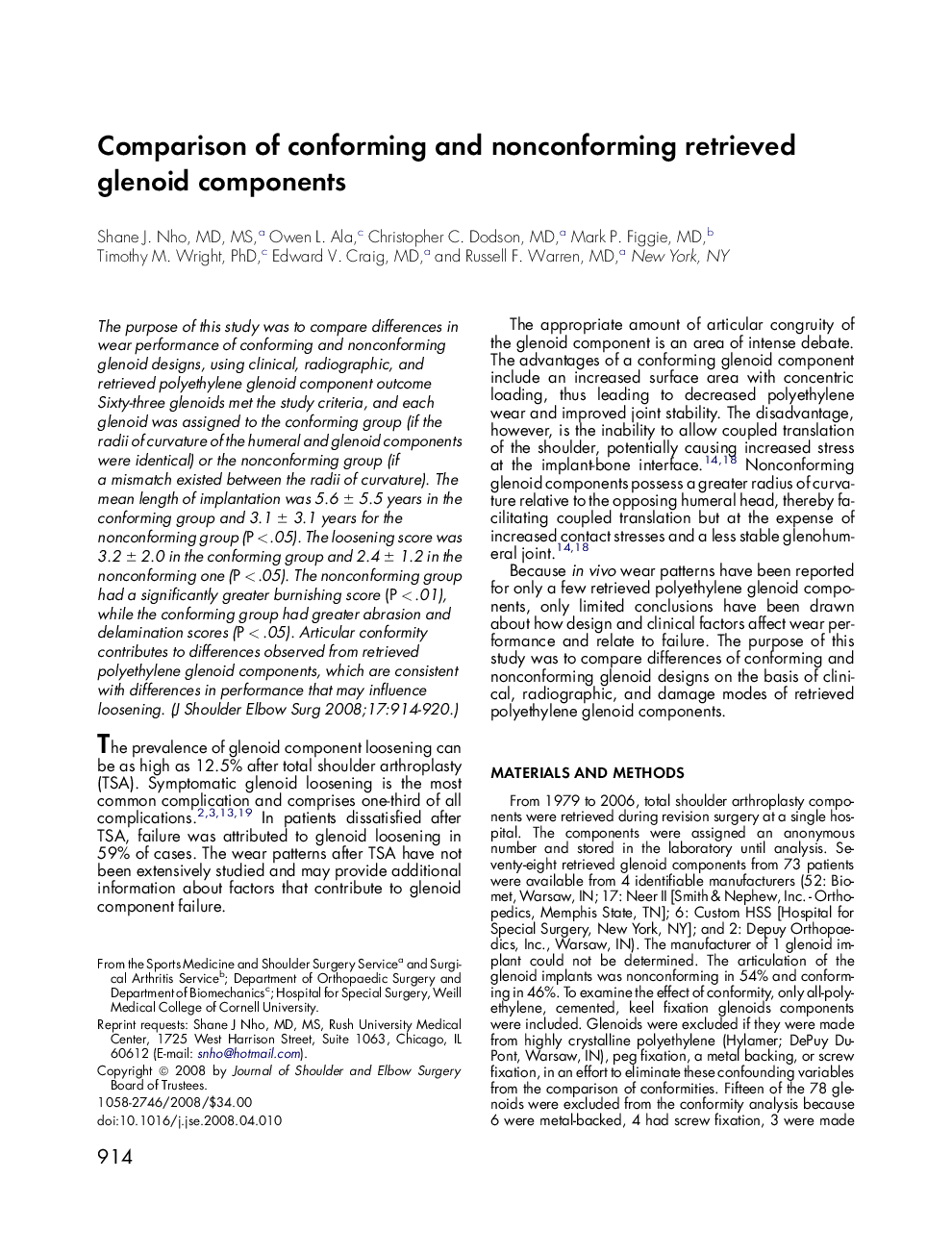| Article ID | Journal | Published Year | Pages | File Type |
|---|---|---|---|---|
| 4074733 | Journal of Shoulder and Elbow Surgery | 2008 | 7 Pages |
The purpose of this study was to compare differences in wear performance of conforming and nonconforming glenoid designs, using clinical, radiographic, and retrieved polyethylene glenoid component outcome Sixty-three glenoids met the study criteria, and each glenoid was assigned to the conforming group (if the radii of curvature of the humeral and glenoid components were identical) or the nonconforming group (if a mismatch existed between the radii of curvature). The mean length of implantation was 5.6 ± 5.5 years in the conforming group and 3.1 ± 3.1 years for the nonconforming group (P < .05). The loosening score was 3.2 ± 2.0 in the conforming group and 2.4 ± 1.2 in the nonconforming one (P < .05). The nonconforming group had a significantly greater burnishing score (P < .01), while the conforming group had greater abrasion and delamination scores (P < .05). Articular conformity contributes to differences observed from retrieved polyethylene glenoid components, which are consistent with differences in performance that may influence loosening.
